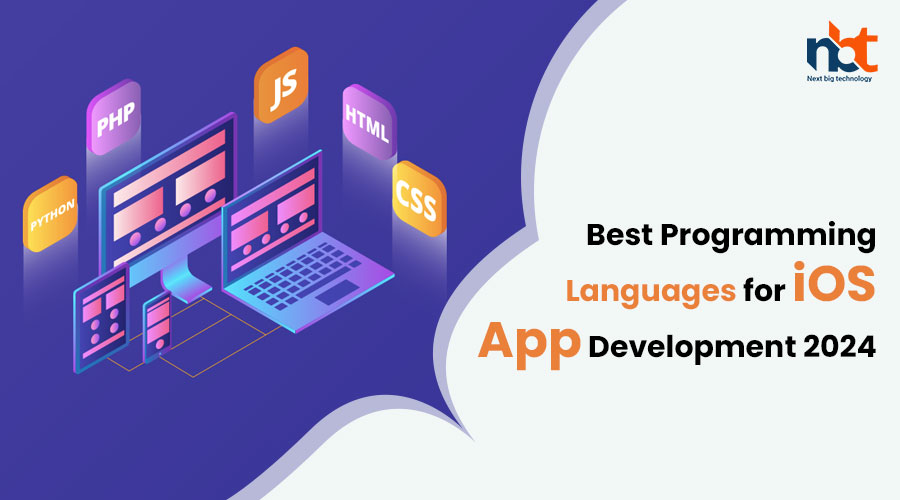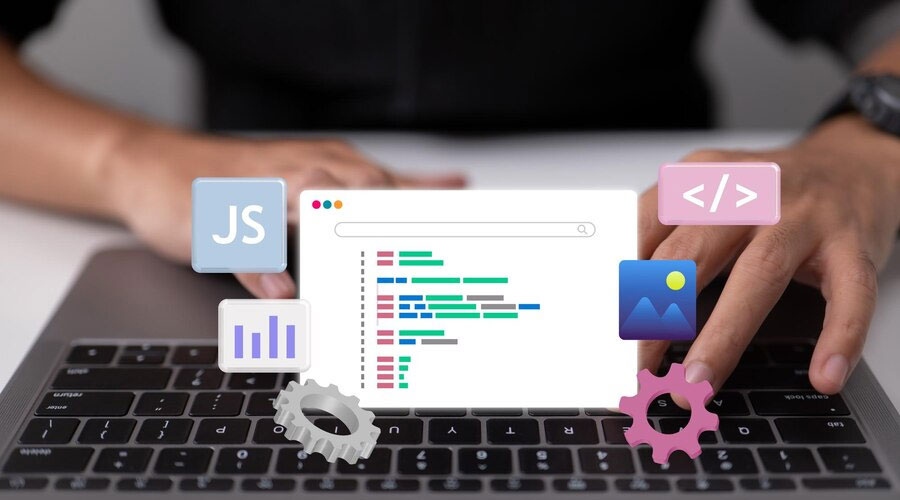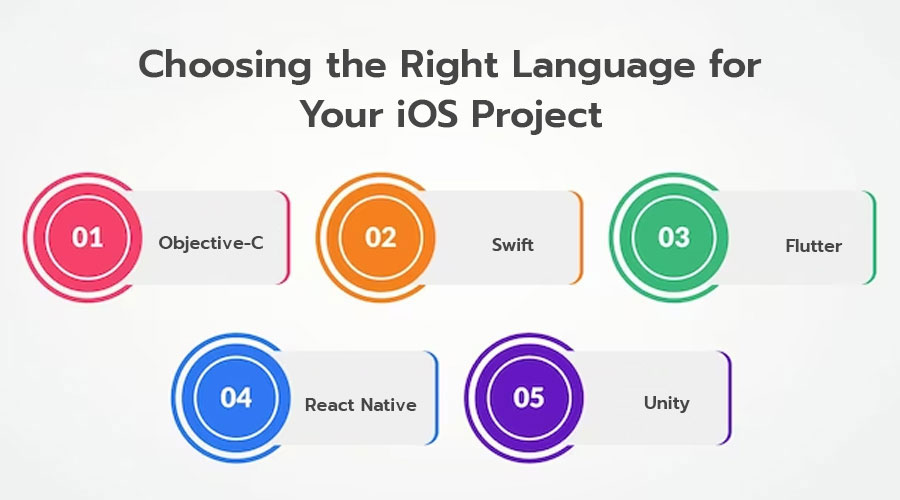Table of Contents
Introduction to iOS App Development
In today’s digital era, where smartphones have become an indispensable part of our lives, the demand for innovative mobile applications continues to soar. Among the plethora of mobile operating systems available, iOS, developed by Apple Inc., stands out for its sleek interface, security features, and seamless user experience. If you’re intrigued by the idea of creating applications for millions of iOS users worldwide, then delving into iOS app development might just be the perfect venture for you.
Understanding iOS App Development:
iOS app development refers to the process of creating applications specifically tailored for Apple’s mobile devices, including the iPhone, iPad, and iPod Touch. Unlike Android, which is an open-source platform, iOS is a closed ecosystem, offering a standardized set of tools and guidelines for developers.
Key Components of iOS App Development:
- Swift Programming Language: Swift is Apple’s preferred programming language for iOS app development. It’s modern, powerful, and designed to be beginner-friendly, making it an ideal choice for both novice and experienced developers.
- Xcode Integrated Development Environment (IDE): Xcode is Apple’s official IDE for iOS app development. It provides a comprehensive set of tools for coding, debugging, and testing applications, along with an intuitive interface that streamlines the development process.
- iOS Software Development Kit (SDK): The iOS SDK consists of frameworks, APIs, and tools that developers can leverage to build innovative and feature-rich applications. From user interface design to accessing device hardware, the iOS SDK offers everything developers need to create cutting-edge apps.
- Interface Builder: Interface Builder is a visual design tool integrated into Xcode, allowing developers to design app interfaces using a drag-and-drop interface. This enables developers to create visually stunning and intuitive user interfaces without writing extensive code.
Getting Started with iOS App Development:
- Set Up Your Development Environment: To start developing iOS apps, you’ll need to set up Xcode on a Mac computer. Xcode is available for free on the Mac App Store and includes everything you need to build, test, and deploy iOS applications.
- Learn the Basics of Swift: Familiarize yourself with the fundamentals of the Swift programming language, including variables, data types, control flow, and functions. There are plenty of online resources, tutorials, and books available to help you get started with Swift.
- Explore iOS Development Concepts: Dive into iOS development concepts such as view controllers, storyboards, navigation controllers, and table views. Understanding these concepts will lay the foundation for building robust and user-friendly iOS applications.
- Start Building Your First App: Once you’re comfortable with Swift and iOS development concepts, embark on your journey to build your first iOS app. Start with a simple project, such as a to-do list or a weather app, and gradually increase the complexity as you gain confidence and experience.
Swift: The Native Language for iOS Development
In the ever-evolving realm of mobile app development, Swift has emerged as the cornerstone for crafting high-performance and feature-rich iOS applications. With its seamless integration with Apple’s frameworks, robust syntax, and emphasis on safety and performance, Swift has swiftly become the native language of choice for iOS development.
Gone are the days when Objective-C was the primary language for iOS app development. Swift, introduced by Apple in 2014, brought a breath of fresh air to the iOS development community with its modern approach and powerful features. Since its inception, Swift has undergone significant enhancements and updates, solidifying its position as the go-to language for building cutting-edge iOS applications.
One of the most compelling aspects of Swift is its simplicity and readability. Its clean syntax, inspired by numerous programming languages, makes it easier for developers to write and maintain code. With Swift, developers can express their ideas more clearly and concisely, resulting in faster development cycles and fewer bugs.
Moreover, Swift’s strong typing system and advanced error handling mechanisms contribute to building robust and stable iOS apps. By catching errors at compile time, Swift empowers developers to write safer code and minimize runtime crashes, enhancing the overall reliability of iOS applications.
Another significant advantage of Swift is its interoperability with Objective-C. Developers can seamlessly integrate Swift code into existing Objective-C projects and vice versa, allowing for a smooth transition to the new language without disrupting ongoing development efforts. This interoperability ensures that developers can leverage existing codebases and frameworks while gradually adopting Swift in their iOS projects.
Furthermore, Swift offers unparalleled performance and efficiency, thanks to its optimized compiler and runtime. With features like automatic memory management and lightweight syntax, Swift minimizes memory overhead and improves app responsiveness, ultimately delivering a superior user experience.
In addition to its technical prowess, Swift enjoys strong support from the developer community and continuous backing from Apple. The thriving ecosystem surrounding Swift includes a vast array of libraries, frameworks, and tools that streamline iOS app development and accelerate time-to-market.
As Apple continues to innovate and push the boundaries of mobile technology, Swift remains at the forefront of iOS development, evolving with each new release to meet the demands of modern app development. Whether you’re a seasoned iOS developer or a newcomer to the platform, embracing Swift as your primary language is the key to unlocking the full potential of iOS app development.
Objective-C: Legacy Support and Transitioning
In the ever-evolving landscape of software development, few languages have left as significant a mark as Objective-C. Introduced over three decades ago, Objective-C has been the cornerstone of iOS and macOS app development, powering iconic applications and shaping the digital experiences of millions. However, with the advent of Swift, Apple’s modern programming language, questions arise about the fate of Objective-C and its role in the future of software development.
Understanding Objective-C’s Legacy:
Objective-C emerged in the early 1980s, gaining prominence through its integration with NeXTSTEP, the foundation of macOS and iOS. Its dynamic nature, message-passing architecture, and Smalltalk-inspired syntax made it a preferred choice for developers, especially in the Apple ecosystem. Over the years, Objective-C facilitated the creation of groundbreaking applications like iTunes, Safari, and even the early versions of Instagram.
The Need for Legacy Support:
Despite the rise of Swift as the primary language for iOS and macOS development, Objective-C’s legacy remains undeniable. Countless apps, libraries, and frameworks are still written in Objective-C, serving as the backbone of the Apple ecosystem. Moreover, many developers and companies continue to maintain Objective-C codebases, either due to legacy commitments or the need for interoperability with existing projects.
Legacy support for Objective-C is not just about preserving past investments but also ensuring the continued functionality and reliability of existing applications. With millions of users relying on Objective-C-powered apps, maintaining compatibility becomes paramount for developers and businesses alike.
Transitioning to Swift:
While Objective-C maintains its relevance, Swift represents the future of Apple’s programming ecosystem. Introduced in 2014, Swift offers modern features, improved safety, and enhanced performance compared to its predecessor. Apple has been actively promoting Swift adoption, incentivizing developers with powerful language features, performance optimizations, and seamless interoperability with existing Objective-C code.
Transitioning from Objective-C to Swift is not merely a matter of preference but a strategic move towards embracing modern development practices and future-proofing applications. Swift’s concise syntax, strong typing, and memory management features streamline development, reduce the potential for errors, and improve overall code quality.
Best Practices for Transitioning:
- Assessment and Planning: Begin by assessing the existing Objective-C codebase to identify critical components, dependencies, and potential challenges. Develop a comprehensive transition plan outlining timelines, milestones, and resource allocations.
- Incremental Migration: Rather than attempting a complete overhaul, adopt an incremental migration approach. Start by integrating Swift into existing Objective-C projects, focusing on new features, modules, or performance-critical sections.
- Interoperability: Leverage Swift’s interoperability with Objective-C to seamlessly integrate new Swift code with existing Objective-C components. Utilize bridging headers and mixed-language frameworks to facilitate communication between the two languages.
- Training and Support: Provide developers with adequate training and resources to familiarize themselves with Swift’s syntax, features, and best practices. Encourage knowledge sharing and collaboration within the development team to expedite the transition process.
- Testing and Validation: Prioritize testing and validation throughout the migration process to ensure the continued functionality, performance, and stability of the application. Implement automated testing frameworks and conduct thorough regression testing to mitigate risks and identify potential issues early on.
Embracing the Future: As the technology landscape continues to evolve, embracing change becomes imperative for staying competitive and relevant. While Objective-C will always hold a special place in the history of Apple development, transitioning to Swift represents a forward-thinking approach towards harnessing the full potential of modern software development.
By carefully navigating the legacy of Objective-C and embracing the capabilities of Swift, developers and businesses can unlock new possibilities, deliver innovative experiences, and thrive in an ever-changing digital world.
React Native: Leveraging JavaScript for iOS Apps
In the realm of mobile app development, React Native stands out as a game-changer, offering developers the ability to leverage their JavaScript skills to create powerful and efficient iOS applications. With its cross-platform capabilities and native-like performance, React Native has emerged as a preferred framework for building iOS apps, providing developers with a seamless development experience and users with high-quality, responsive applications.
Harnessing the Power of JavaScript: At the core of React Native lies JavaScript, a versatile and widely-used programming language known for its simplicity and flexibility. By harnessing the power of JavaScript, developers can write code that is not only easy to understand and maintain but also highly efficient. With React Native, developers can leverage their existing JavaScript knowledge and libraries to build iOS apps, eliminating the need to learn complex languages or frameworks.
Cross-Platform Compatibility: One of the key advantages of React Native is its cross-platform compatibility. With a single codebase, developers can target multiple platforms, including iOS, Android, and even web, streamlining the development process and reducing time-to-market. By utilizing JavaScript, React Native enables developers to write platform-independent code, allowing them to create consistent and cohesive user experiences across different devices and operating systems.
Native-Like Performance: While JavaScript is traditionally associated with web development, React Native takes it a step further by delivering native-like performance. By leveraging native components and APIs, React Native ensures that apps look and feel just like native applications, offering smooth animations, responsive touch gestures, and optimal performance. This allows developers to create iOS apps that are indistinguishable from those built using traditional native development methods.
Seamless Integration with Native Code: Despite its JavaScript roots, React Native offers seamless integration with native code, allowing developers to access platform-specific features and functionalities when needed. Whether it’s integrating with third-party libraries, accessing device sensors, or optimizing performance, React Native provides developers with the flexibility to incorporate native code into their iOS apps, ensuring maximum compatibility and functionality.
Rapid Development and Iteration: Thanks to its hot reloading feature and modular architecture, React Native enables rapid development and iteration, allowing developers to see changes in real-time without having to rebuild the entire app. This significantly accelerates the development process, allowing teams to iterate quickly, gather feedback, and make improvements on the fly. By leveraging JavaScript and React Native’s development tools, developers can build, test, and deploy iOS apps faster than ever before.
Kotlin Multiplatform: Extending to iOS from Android
In today’s dynamic tech landscape, cross-platform development has emerged as a game-changer, offering efficiency, flexibility, and cost-effectiveness. Kotlin Multiplatform, a revolutionary framework, has been at the forefront, enabling developers to transcend platform boundaries seamlessly. While initially acclaimed for its prowess in Android app development, Kotlin Multiplatform has now set its sights on conquering the iOS realm, marking a significant leap forward in cross-platform development.
Breaking Down Silos: Kotlin Multiplatform
Kotlin Multiplatform empowers developers to write shared code that can be seamlessly utilized across multiple platforms, eliminating the need for separate codebases for Android and iOS. By leveraging Kotlin’s conciseness, readability, and interoperability, developers can efficiently build robust applications while maintaining code consistency and reducing development time.
Extending to iOS: A Bold Move
Extending Kotlin Multiplatform to iOS is a testament to its versatility and adaptability. Developers can now harness the power of Kotlin to build iOS applications without compromising on performance or user experience. This expansion opens up a plethora of opportunities for businesses and developers alike, allowing them to reach a broader audience and maximize their app’s potential.
Seamless Integration: Bridging the Gap
One of the key advantages of Kotlin Multiplatform is its seamless integration with existing iOS projects. Developers can effortlessly integrate Kotlin modules into their Xcode projects, allowing for smooth collaboration between Android and iOS teams. This interoperability fosters synergy, streamlines development workflows, and accelerates time-to-market, giving businesses a competitive edge in today’s fast-paced market.
Maximizing Code Reusability: The Power of Shared Code
With Kotlin Multiplatform, developers can maximize code reusability by sharing business logic, networking layers, and data models across platforms. This not only reduces code duplication but also ensures consistency and reduces the likelihood of bugs. By centralizing core functionalities, developers can focus on platform-specific UI/UX enhancements, delivering a polished and cohesive user experience across Android and iOS devices.
Optimizing Performance: Native Under the Hood
Contrary to traditional cross-platform frameworks, Kotlin Multiplatform generates truly native code for each platform, ensuring optimal performance and native-like user experiences. By leveraging platform-specific APIs and libraries, developers can harness the full potential of each platform while maintaining code coherence. This approach strikes the perfect balance between performance and code sharing, offering the best of both worlds.
Future Prospects: Innovation Knows No Bounds:
As Kotlin Multiplatform continues to evolve, its potential for innovation knows no bounds. With support for new platforms and technologies on the horizon, developers can expect even greater flexibility and scalability in their cross-platform endeavors. Whether it’s extending to wearables, IoT devices, or emerging platforms, Kotlin Multiplatform remains at the forefront of cross-platform development, driving innovation and shaping the future of mobile technology.
Python: Emerging Trends in iOS App Development
In the dynamic realm of mobile app development, Python is increasingly asserting its influence, particularly in the domain of iOS app development. With its simplicity, versatility, and robustness, Python has become a preferred choice for developers aiming to craft innovative and efficient iOS applications. In this article, we’ll delve into the emerging trends where Python is making significant strides in iOS app development, reshaping the landscape of mobile technology.
- Cross-Platform Development: Python’s compatibility with multiple platforms is a game-changer for developers seeking to streamline their workflow. Leveraging frameworks like Kivy and BeeWare, developers can write code once and deploy it across various platforms, including iOS. This cross-platform capability accelerates the development process and reduces time-to-market for iOS apps, enhancing efficiency and cost-effectiveness.
- Data Science Integration: The integration of data science capabilities into iOS applications is gaining momentum, driven by the increasing demand for data-driven insights and predictive analytics. Python’s rich ecosystem of libraries such as NumPy, Pandas, and TensorFlow enables developers to seamlessly incorporate machine learning algorithms, data visualization, and statistical analysis into iOS apps. From personalized recommendations to real-time data processing, Python empowers iOS developers to harness the power of data science, enhancing user experience and app functionality.
- AI-Powered Features: Artificial Intelligence (AI) and Machine Learning (ML) are revolutionizing the iOS app landscape, enabling developers to create intelligent, adaptive applications. Python’s simplicity and extensive ML libraries, including scikit-learn and PyTorch, facilitate the integration of AI-powered features such as natural language processing, image recognition, and predictive modeling into iOS apps. These AI-driven functionalities enhance user engagement, optimize app performance, and enable personalized experiences tailored to individual user preferences.
- Automation and Scripting: Automation is key to streamlining app development processes, enabling developers to automate repetitive tasks, enhance productivity, and ensure consistency in app performance. Python’s scripting capabilities and extensive libraries such as Selenium and Appium empower developers to automate testing, deployment, and maintenance processes for iOS apps. By automating routine tasks, Python enables developers to focus on innovation and creativity, driving the evolution of iOS app development.
- Server-Side Development with Django and Flask: While iOS apps primarily run on client devices, server-side development plays a crucial role in supporting app functionality, managing data, and facilitating communication with external services. Python’s web frameworks, Django and Flask, provide robust solutions for server-side development, enabling developers to build scalable, secure, and high-performance backend systems for iOS apps. Whether it’s building RESTful APIs or managing user authentication, Python’s server-side capabilities empower developers to create robust and reliable iOS applications.
HTML5, CSS, JavaScript: Web Technologies in iOS Apps
In the dynamic realm of iOS app development, innovation is the key to staying ahead in the game. While Objective-C and Swift have long been the primary languages for crafting iOS applications, the integration of web technologies like HTML5, CSS, and JavaScript has opened up a new horizon of possibilities. This amalgamation not only enhances the user experience but also simplifies the development process, making it more efficient and versatile.
HTML5, the latest iteration of the hypertext markup language, brings a plethora of features that are tailor-made for modern app development. Its semantic structure allows developers to create cleaner and more organized code, resulting in applications that are easier to maintain and scale. Moreover, HTML5 introduces native support for audio and video elements, enabling developers to seamlessly integrate multimedia content into their iOS apps.
CSS, or Cascading Style Sheets, complements HTML5 by providing powerful styling capabilities. With CSS3, developers can create stunning visual effects, responsive layouts, and animations that rival those of native iOS applications. From intricate designs to fluid transitions, CSS empowers developers to unleash their creativity and craft visually appealing user interfaces that captivate users from the moment they launch the app.
JavaScript, the backbone of interactive web development, serves as the glue that binds HTML5 and CSS together. Its versatility and robustness make it an indispensable tool for adding interactivity and functionality to iOS apps. With frameworks like React Native and Ionic, developers can leverage their existing knowledge of JavaScript to build cross-platform iOS apps that look and feel like native applications. This not only accelerates the development process but also ensures a consistent user experience across different devices and platforms.
One of the key advantages of using HTML5, CSS, and JavaScript in iOS app development is the ability to leverage web technologies and resources. By harnessing the power of web APIs, developers can integrate a wide range of services and functionalities into their iOS apps, from social media integration to real-time data synchronization. Furthermore, the wealth of resources available in the web development community, such as libraries, plugins, and tutorials, provides developers with the support they need to tackle complex challenges and push the boundaries of what is possible.
Xamarin: Microsoft’s Approach to iOS Development
In the ever-evolving landscape of mobile app development, creating cross-platform applications that seamlessly run on multiple operating systems has become a paramount goal for developers worldwide. Among the myriad of frameworks and tools available, Xamarin, Microsoft’s innovative approach to iOS development, stands out as a versatile and powerful solution. In this article, we delve into the realm of Xamarin, exploring its features, advantages, and why it’s gaining traction among developers.
Understanding Xamarin:
Xamarin is a cross-platform mobile app development framework that allows developers to build native iOS, Android, and Windows apps using a single codebase. What sets Xamarin apart is its use of C# programming language, which enables developers to write code once and deploy it across multiple platforms. By leveraging the .NET framework, Xamarin provides access to a rich set of libraries and tools, empowering developers to create high-performance, native mobile applications.
Microsoft’s Vision:
Acquired by Microsoft in 2016, Xamarin has since been integrated into the company’s suite of development tools, further enhancing its capabilities and support. Microsoft’s vision with Xamarin is to simplify the app development process, reduce time-to-market, and enable developers to reach a broader audience without compromising on performance or user experience.
Advantages of Xamarin:
- Code Reusability: With Xamarin, developers can write a single codebase in C# and share it across iOS, Android, and Windows platforms, significantly reducing development time and effort.
- Native Performance: Xamarin allows developers to build native apps that perform as well as those developed using platform-specific languages like Objective-C or Swift for iOS. This ensures a smooth and responsive user experience.
- Access to Native APIs: Xamarin provides access to a vast array of platform-specific APIs and features, allowing developers to integrate device-specific functionalities seamlessly into their apps.
- Unified Development Environment: Developers can use Visual Studio, Microsoft’s integrated development environment (IDE), to write, debug, and test Xamarin applications, streamlining the entire development process.
- Community and Support: Xamarin boasts a thriving community of developers and a robust support ecosystem, offering extensive documentation, forums, and resources to help developers overcome challenges and accelerate their app development journey.
Xamarin in Action:
Numerous successful apps have been built using Xamarin, spanning various industries and use cases. From enterprise applications to consumer-facing products, Xamarin has proven its versatility and effectiveness in delivering high-quality mobile experiences. Some notable examples include Slack, UPS, and Alaska Airlines, all of which leverage Xamarin to power their mobile applications.
Choosing the Right Language for Your iOS Project
In the realm of iOS app development, choosing the right programming language is akin to selecting the foundation for your dream house. It’s a decision that lays the groundwork for everything to come. With a plethora of options available, each with its own set of advantages and disadvantages, the task can seem daunting. However, fear not! This guide is here to shed light on the key considerations that will help you make an informed choice.
- Objective-C: Objective-C has been the traditional language for iOS development, favored by Apple for many years. It offers stability, maturity, and a vast ecosystem of libraries and resources. If you’re working on a legacy project or collaborating with developers who are proficient in Objective-C, sticking with this language might be the way to go. However, it’s worth noting that its syntax can be verbose and somewhat complex compared to more modern alternatives.
- Swift: Swift burst onto the scene in 2014, promising a more modern, concise, and safer alternative to Objective-C. Since then, it has rapidly gained popularity among iOS developers. Swift’s syntax is cleaner and more readable, making it easier to maintain and understand codebases. Additionally, it offers features like optionals and type inference that enhance safety and reduce the likelihood of runtime errors. If you’re starting a new project or looking to future-proof your code, Swift is undoubtedly a strong contender.
- Flutter: While not a native iOS language, Flutter deserves mention for its growing popularity and cross-platform capabilities. Developed by Google, Flutter uses the Dart programming language and boasts a hot reload feature that accelerates the development process. With Flutter, you can write code once and deploy it on both iOS and Android platforms, saving time and resources. If cross-platform compatibility is a priority for your project, Flutter might be worth exploring.
- React Native: Similar to Flutter, React Native is another cross-platform framework that allows developers to build iOS and Android apps using JavaScript and React. It enjoys widespread adoption and is backed by a large community and extensive documentation. If you’re already familiar with web development technologies or have a team proficient in JavaScript, React Native could be a natural fit for your iOS project.
- Unity: Although primarily known for game development, Unity has been used to create non-gaming applications, including some on iOS. It offers powerful graphics capabilities and supports C# scripting, making it suitable for building immersive experiences. If your iOS project involves 3D graphics, simulations, or virtual/augmented reality, Unity might be the perfect choice.
Top Best Programming Languages for iOS App Development 2024 Companies
In the dynamic world of iOS app development, choosing the right programming language can make all the difference for companies looking to create innovative and successful applications. With the ever-evolving landscape of technology, staying updated on the best programming languages for iOS app development is crucial for businesses aiming to thrive in the competitive market of 2024. Here, we delve into the top choices that can empower companies to build cutting-edge iOS applications that meet the demands of today’s users.
-
-
Next Big Technology:

Focus Area
- Mobile App Development
- App Designing (UI/UX)
- Software Development
- Web Development
- AR & VR Development
- Big Data & BI
- Cloud Computing Services
- DevOps
- E-commerce Development
Industries Focus
- Art, Entertainment & Music
- Business Services
- Consumer Products
- Designing
- Education
- Financial & Payments
- Gaming
- Government
- Healthcare & Medical
- Hospitality
- Information Technology
- Legal & Compliance
- Manufacturing
- Media
-
- Objective-C: While Swift has become the preferred choice for iOS app development, Objective-C remains relevant, especially for companies maintaining legacy iOS applications. Objective-C provides a rich set of features and a long-standing history in iOS development, making it a viable option for companies with existing codebases or specific project requirements that warrant its use.
- Kotlin Multiplatform: Kotlin Multiplatform emerges as a promising option for companies seeking cross-platform development capabilities for iOS apps. Developed by JetBrains, Kotlin Multiplatform allows developers to write shared business logic and UI code that can be compiled to run natively on iOS, Android, and other platforms. With its interoperability with Swift and seamless integration with existing iOS projects, Kotlin Multiplatform offers a compelling solution for companies looking to streamline development efforts across multiple platforms.
- Flutter: Flutter, Google’s UI toolkit for building natively compiled applications for mobile, web, and desktop from a single codebase, gains traction among companies venturing into iOS app development in 2024. With its fast development cycle, expressive UI components, and hot reload feature, Flutter enables rapid iteration and prototyping of iOS apps. While not a native iOS programming language, Flutter’s ability to compile to native code ensures high performance and native-like user experiences on iOS devices.
- React Native: React Native remains a popular choice for companies seeking a balance between native performance and cross-platform development efficiency. Leveraging JavaScript and React, React Native allows developers to build iOS apps with a native look and feel while sharing a significant portion of code across platforms. With a vast ecosystem of libraries, tools, and community support, React Native empowers companies to deliver feature-rich iOS applications with speed and scalability.
FAQs On Best Programming Languages for iOS App Development 2024
In the dynamic landscape of mobile app development, iOS stands out as a platform that continually evolves, offering developers new opportunities and challenges. As we step into 2024, the quest for the best programming languages for iOS app development remains a key focus for developers seeking to create cutting-edge applications. Here, we delve into some frequently asked questions surrounding this topic to provide clarity and guidance:
1. What are the top programming languages for iOS app development in 2024? In 2024, Swift continues to reign supreme as the preferred language for iOS app development. Its modern syntax, performance, and strong support from Apple make it an ideal choice for building robust and efficient iOS applications. Additionally, Objective-C remains relevant, particularly for maintaining legacy codebases or integrating with existing libraries.
2. Is learning Swift essential for iOS app development in 2024? While Swift has become the de facto language for iOS development, knowing Objective-C can still be beneficial, especially when working with older codebases. However, given Swift’s advancements and Apple’s emphasis on it, investing time in mastering Swift is highly recommended for aspiring iOS developers in 2024.
3. Are there any emerging languages gaining traction for iOS app development? While Swift dominates the iOS development landscape, some emerging languages and frameworks are gaining attention. SwiftUI, Apple’s declarative UI framework, is rapidly gaining popularity for its simplicity and powerful features. Additionally, languages like Kotlin and Dart, although primarily associated with Android and Flutter development, respectively, are being explored for cross-platform app development.
4. How important is it to stay updated with the latest trends in iOS app development languages? Staying updated with the latest trends and advancements in iOS app development languages is crucial for developers aiming to stay competitive in the industry. With Apple regularly introducing new features, frameworks, and updates, keeping abreast of these changes ensures developers can leverage the latest tools and techniques to create innovative and high-quality iOS applications.
5. Can I use languages like JavaScript or Python for iOS app development in 2024? While JavaScript and Python are versatile languages with widespread use, they are not native to iOS development. However, technologies like React Native and Flutter allow developers to use JavaScript and Dart, respectively, to build cross-platform iOS applications. While these frameworks offer advantages in terms of code reusability, performance considerations and platform-specific features should be carefully evaluated before choosing them for iOS app development.
6. How can I decide which programming language is best suited for my iOS app project in 2024? Choosing the right programming language for your iOS app project depends on various factors such as project requirements, team expertise, performance considerations, and future scalability. Conducting thorough research, evaluating the pros and cons of each language, and considering the specific needs of your project will help you make an informed decision.
Thanks for reading our post “Best Programming Languages for iOS App Development 2024”. Please connect with us to learn more about Best Best Programming Languages for iOS App Development.















